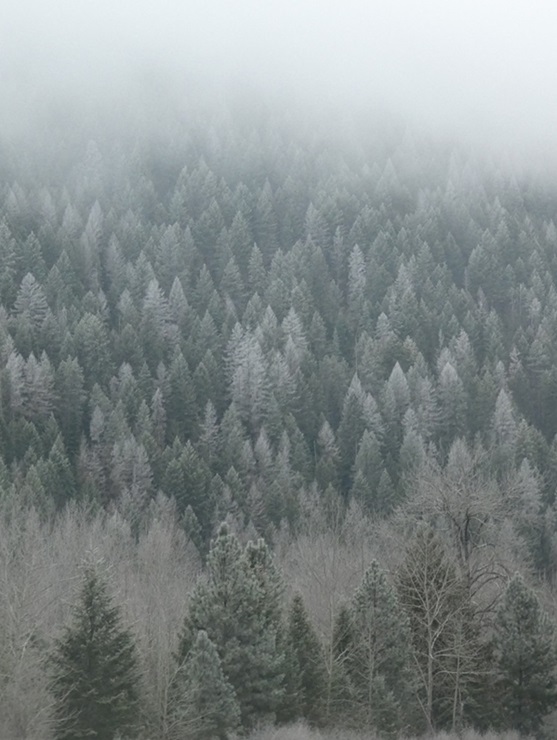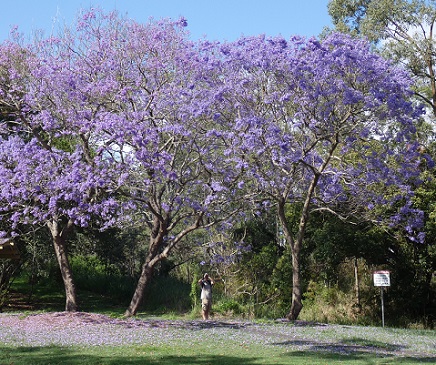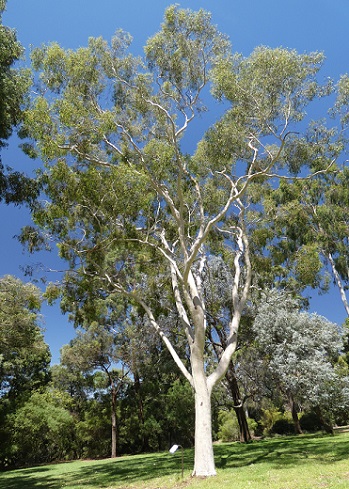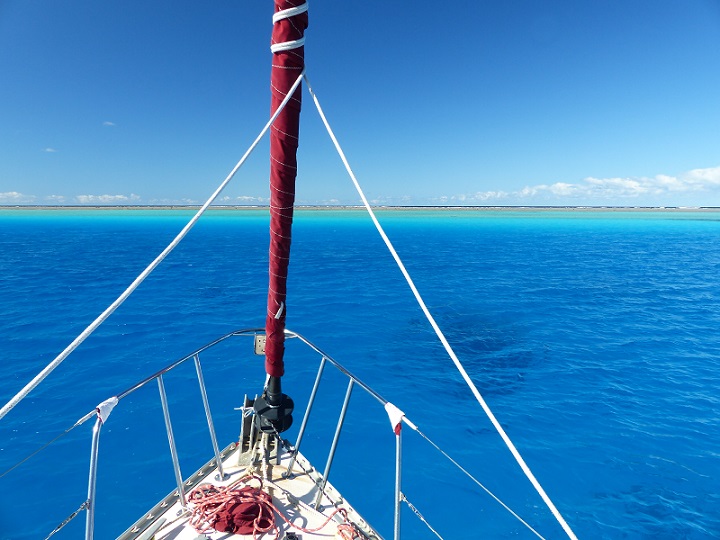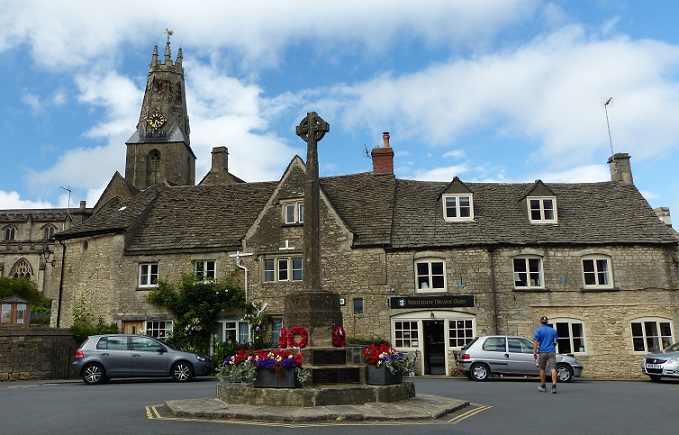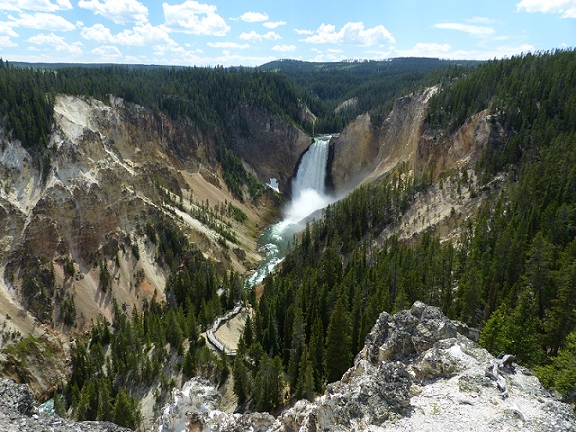
Tregoning
12 April 2024 | We are back aboard Tregoning in Mersin Marina, Mersin, Türkiye
02 April 2024 | We are in Toronto Airport, Canada: Tregoning is in Mersin Marina, Mersin, Türkiye
25 February 2024 | We are back in Gainesville, FL: Tregoning is in Mersin Marina, Mersin, Türkiye
18 February 2024 | We are in Glenwood, New Mexico: Tregoning is in Mersin Marina, Mersin, Türkiye
12 February 2024 | We are in Morro Bay, California: Tregoning is in Mersin Marina, Mersin, Türkiye
19 January 2024 | We are in Vancouver, BC Canada: Tregoning is in Mersin Marina, Mersin, Türkiye
01 January 2024 | We are in Washington State: Tregoning is in Mersin Marina, Mersin, Türkiye
15 December 2023 | We are in Minnesota: Tregoning is in Mersin Marina, Mersin, Türkiye
18 November 2023 | We are in Florida: Tregoning is in Mersin Marina, Mersin, Türkiye
29 October 2023 | We're in Florida - Tregoning is at B-dock, Mersin Marina, Mersin, Türkiye
21 October 2023 | 7 Oda Kapadokya Cave Hotel, Ürgüp, Türkiye
14 October 2023 | Hotel Aşikoğlu, Boğazkale, Türkiye
07 October 2023 | B-dock, Mersin Marina, Mersin, Türkiye
19 September 2023 | “Chez Jon & Angela”, Near Otterton, Devon, UK
14 September 2023 | Airbnb in Fortuneswell on the Isle of Portland, Dorset, UK
11 September 2023 | With Mike, Grange-over-Sands, Cumbria, UK
03 September 2023 | Ardington House, Ardington, Oxfordshire, UK
24 August 2023 | Near "Chez Joan and Peter", College of Roseisle, Moray, Scotland
11 August 2023 | Andrew's house (not exactly), Lichfield, UK
22 July 2023 | Chez Gail, near the New York Café, Budapest, Hungary
An old walled city
13 August 2016 | Tregoning is in Whangarei Town Basin Marina, Whangarei, New Zealand but we are in York, Great Britain
Photo: The grand Gothic cathedral of York Minster
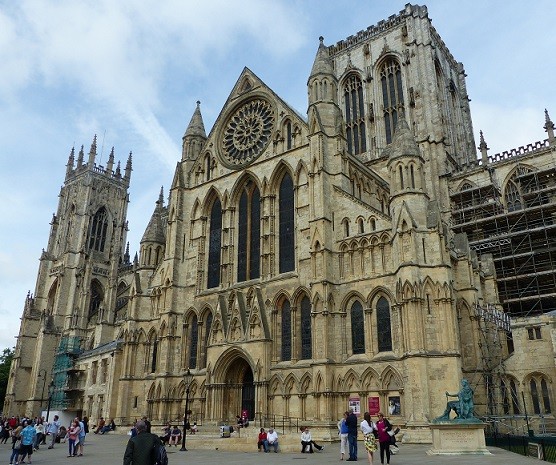
As if learning all about dry stone walls was not enough for us, a few days after our trip to Shibden Hall, we headed to the walled city of York. We had enjoyed a couple of days of cycling and walking near Wakefield with Andrew and Judith but on Saturday (August 13th) we took a train to York where we were going to meet some of my university buddies. With a bit of time to spare before our lunch gathering, we walked along part of the old city walls, visited the ruins of St Mary’s Abbey, circled the famous York Minster, and strolled through The Shambles. We did not have time to visit the Roman ruins under the Minster or the Jórvík Viking Center but we had each done these on previous occasions.
With a current population of just under 204,500, York has a long and regionally significant history. The city was founded in 71 AD when the Romans conquered the Brigantes tribe, but archaeological evidence suggests that Mesolithic people were occupying in the area by 7000 BC. The site of the Roman fortress is under the foundations of York Minster, with some of its original walls revealed by excavations in the Minster’s undercroft. York was granted the privileges of a city by one of the several Roman emperors who held court in York during their campaigns, and on the death of his father in 306 AD, Constantine the Great was proclaimed Emperor in York.
Although the Roman fortress was located on high ground, periodic flooding caused the town to be abandoned by 400 AD. It was resettled by the Angles in the 5th century and by the 7th century, under King Edwin of Northumbria, the flooded areas were reclaimed. Edwin had the first minster church built for his baptism in 627 AD, with the wooden church being rebuilt in stone by his successor, Oswald. “Minsters” were churches established in the Anglo-Saxon period as missionary teaching churches.
Arriving from Scandinavia, the Vikings (a.k.a. the Norse) raided and captured York in 866 AD and the city of Jórvík became a major river port, part of the extensive Viking trading routes throughout northern Europe. The last Norse King of Northumbria, Eric Bloodaxe, was driven from the city in 954 AD by King Eadred in his successful attempt to complete the unification of England. Within two years of the Norman conquest of England in 1066, the people of York rebelled. When William the Conqueror came to put down this rebellion and subsequent ones, he had several wooden castles built in the area. The original stone minster was badly damaged during one of the uprisings so the Normans built a minster on a new site.
Located on the River Ouse and close to the Great North Road, during the 12th century, York became a major trading center with King John granting the city's first charter in 1212 which confirmed trading rights in England and Europe. Specifically, York became a major center for manufacturing and trade in cloth. Given the city’s prosperity, the archbishop of York ordered the construction, starting in 1220, of a Gothic structure to compare to Canterbury Cathedral. Building continued for many decades until the current Minster, the second largest Gothic cathedral in Northern Europe after Cologne Cathedral, was completed and consecrated in 1472.
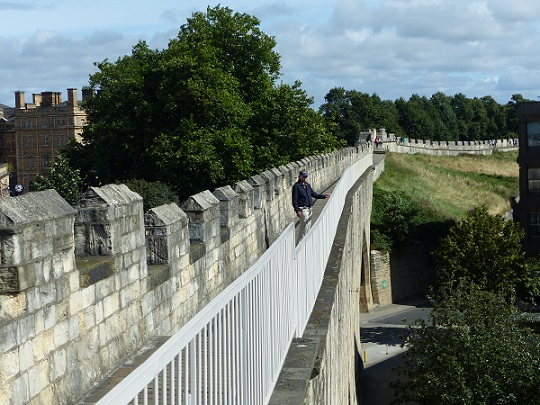
Randall on part of York’s City Walls
The Romans had built a rectangle of walls to protect their fortress. Between the 12th and 14th centuries, what remained of these walls was restored and expanded so that all of the medieval city was surrounded by them. Thanks to some restoration work in the 19th and 20th centuries, these are the most intact city walls in England and the entire circuit is about 2.5 miles (4 km) in length and encloses 263 acres (106 ha). All of the principal gateways, used defensively and as toll gates to tax and control entry to the city, are intact. We visited two of the four main gates or “bars”, Micklegate Bar and Monk Bar and these both have a limited flow of vehicular traffic through them, as well as pedestrian passage through and over them.
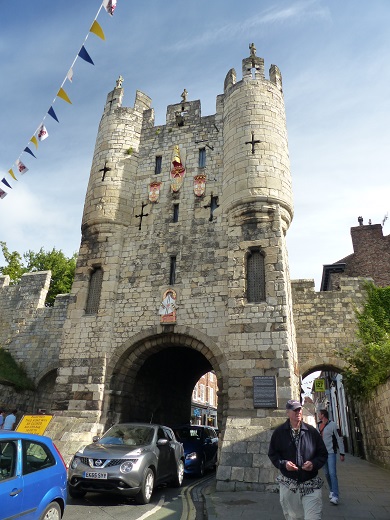
Micklegate Bar, the southern gateway in York’s city walls
On the south side of the city, Micklegate Bar was the traditional entrance for monarchs visiting York, and after the gate was fortified and had a heavy portcullis added in the 14th century, traitors’ severed heads were displayed and left to rot there. Less gruesomely, the four storey-high gatehouse now contains a museum. Monk Bar, on the western wall just south of the main Roman gate, is slightly taller than Micklegate Bar and was built as a self-contained fortress in which each floor could be defended separately. It too is now home to a museum.
The Shambles is a medieval street with overhanging timber-framed buildings, some dating back to the fourteenth century. Now a tourist attraction stuffed with camera-wielding pedestrians, gift shops, and cafés, it was once known as The Great Flesh Shambles (probably from the Anglo-Saxon Fleshammels = literally 'flesh-shelves'). This related to the shelves on which butchers used to display their meat. With guts, offal, and blood simply tossed into the open gutter running down the middle of the street, this would not have been a popular destination for tourists. As recently as 1872, there were twenty-five butchers' shops on this street but now there is not one.

Houses almost meet over the street called The Shambles
From 1536 to 1541, Tudor King Henry VIII decided to severely curtail the influence of Catholicism in England and Wales, and to appropriate monastic funds, by instituting the Dissolution of Monasteries. During this time, York underwent a period of economic decline as it lost several monastic houses and two Catholic hospitals. At the time, St Mary’s Abbey, situated just outside York’s city walls, was the richest abbey in the north of England. It had been established in 1088 after the Norman William the Conqueror gave the monk Stephen permission to create a new monastery. The Benedictine order’s new church, which was completed in 1294, was an architectural rival to the Minster (just within the city walls to the east) for two more than centuries. However, in 1539, after the riches of the abbey had been confiscated, the building was taken apart, left to collapse, and then had stones removed for other building projects. Today, the remains of the north and west walls provide an attractive and peaceful sanctuary in the lovely gardens that are shared with the Yorkshire Museum.
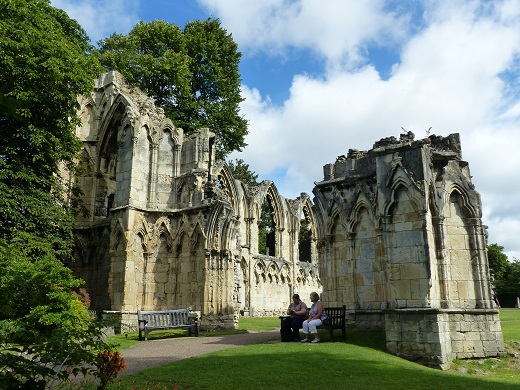
The remaining walls of St Mary’s Abbey in York
The suppression of Catholicism in England was not received without some rebellion. Perhaps one of the most famous Roman Catholic restorationists was born and educated in York. Guy Fawkes was actually baptized in the Church of England but later converted to Catholicism and fought for Catholic Spain against the Dutch. Returning to England, Fawkes joined a group of conspirators who planned to displace Protestant rule by assassinating King James I and most of the Protestant and Catholic aristocracy and nobility, during the official Opening of Parliament. As a former soldier, Fawkes was put in charge of collecting a large amount of gunpowder and placing it in an undercroft, directly below the House of Lords, which the group had been able to lease. In late July 1605, due to the threat of the plague in London, the date of the Opening was delayed until November 5th and Guy Fawkes was responsible for guarding the gunpowder. An anonymous letter, warning a Catholic Lord to stay away from the proceedings was shown to King James and led to a search of the cellars of the Houses of Parliament early on November 5th. The gunpowder was discovered, foiling the plot, and Guy Fawkes was subsequently tortured, tried along with seven other conspirators, and executed. The anniversary of the foiled plot is celebrated throughout Britain with bonfires and fireworks every November 5th.
The Loyalist city of York was besieged in 1644, during the Civil War, but eventually surrendered to the Parliamentarians. Following the restoration of the monarchy in 1660, and the removal of the garrison from York in 1688, the city was dominated by the gentry and merchants. Silting of the River Ouse and competition from Leeds and Hull, diminished York’s position as a trading center but by the 18th century, York was becoming a social and cultural center for wealthy northerners with the corresponding construction of many elegant townhouses.
Following the arrival of the railways in 1839, York became established as a major railway center. This led to the expansion of two confectionary companies, Rowntree’s Cocoa Works and Terry’s of York, so that by 1900, railways and confectionary were the two major industries of the city. Today, the major employers in York are government offices and service industries, including healthcare and the University of York. The city remains the capital of the northern ecclesiastical province of the Church of England and with so many well-preserved historic structures, it is not surprising that tourism is also major contributor to the local economy.
Of course, we had not really come to York just to be tourists for a few hours but we were very excited to be picked-up in the city by my good friend Lisa. She drove us to her lovely house in nearby Askam Bryan, where we were generously treated to a marvelous lunch in the company of Lisa’s husband, Keith, and two more of my wonderful University of Liverpool buddies, Diane and Kate. We had hosted Lisa, Keith and their three children briefly in Florida one Christmas and I had seen Diane during one of my trips back to the UK from Florida but I had probably not seen Kate for about 30 years. But does it ever seem like that once the conversation (and wine) starts flowing?
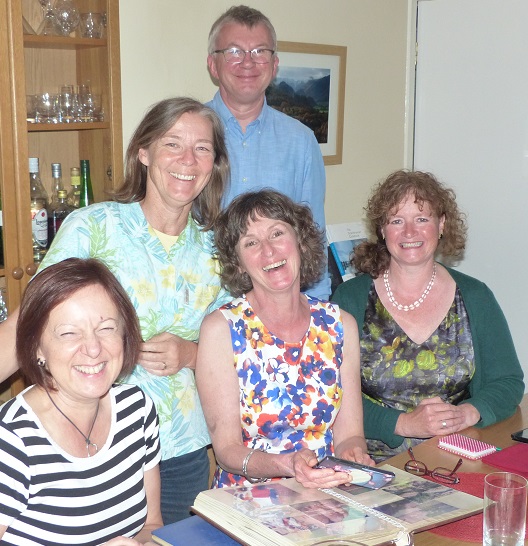
Lisa, Alison, Keith, Diane, and Kate (L to R) laughing over a photograph album from our undergraduate days
Even with Keith to help interpret, I am not certain that Randall could follow all of our rapid reminiscing, especially when Lisa produced a photograph album from our undergraduate days. However, both chaps were excellent sports and seemed quite happy to join in our riotous laughter even when they probably had no idea about whom or what we were nattering. Heck, among the four of us, we rarely could all remember the people, places, and events quite the same. With tea and cakes served outside in the sunshine, it was a truly joyous afternoon and might had lasted deep into the night if we had not needed to disperse. Leaving poor Lisa, Keith, and son Oliver to clear-up, Kate had to catch a train home to Brighton, Diane needed to drive back to Harrowgate, and Andrew kindly arrived to take Randall and me back to Wakefield where we were going to meet the most recent addition to the Fox family.
With a current population of just under 204,500, York has a long and regionally significant history. The city was founded in 71 AD when the Romans conquered the Brigantes tribe, but archaeological evidence suggests that Mesolithic people were occupying in the area by 7000 BC. The site of the Roman fortress is under the foundations of York Minster, with some of its original walls revealed by excavations in the Minster’s undercroft. York was granted the privileges of a city by one of the several Roman emperors who held court in York during their campaigns, and on the death of his father in 306 AD, Constantine the Great was proclaimed Emperor in York.
Although the Roman fortress was located on high ground, periodic flooding caused the town to be abandoned by 400 AD. It was resettled by the Angles in the 5th century and by the 7th century, under King Edwin of Northumbria, the flooded areas were reclaimed. Edwin had the first minster church built for his baptism in 627 AD, with the wooden church being rebuilt in stone by his successor, Oswald. “Minsters” were churches established in the Anglo-Saxon period as missionary teaching churches.
Arriving from Scandinavia, the Vikings (a.k.a. the Norse) raided and captured York in 866 AD and the city of Jórvík became a major river port, part of the extensive Viking trading routes throughout northern Europe. The last Norse King of Northumbria, Eric Bloodaxe, was driven from the city in 954 AD by King Eadred in his successful attempt to complete the unification of England. Within two years of the Norman conquest of England in 1066, the people of York rebelled. When William the Conqueror came to put down this rebellion and subsequent ones, he had several wooden castles built in the area. The original stone minster was badly damaged during one of the uprisings so the Normans built a minster on a new site.
Located on the River Ouse and close to the Great North Road, during the 12th century, York became a major trading center with King John granting the city's first charter in 1212 which confirmed trading rights in England and Europe. Specifically, York became a major center for manufacturing and trade in cloth. Given the city’s prosperity, the archbishop of York ordered the construction, starting in 1220, of a Gothic structure to compare to Canterbury Cathedral. Building continued for many decades until the current Minster, the second largest Gothic cathedral in Northern Europe after Cologne Cathedral, was completed and consecrated in 1472.

Randall on part of York’s City Walls
The Romans had built a rectangle of walls to protect their fortress. Between the 12th and 14th centuries, what remained of these walls was restored and expanded so that all of the medieval city was surrounded by them. Thanks to some restoration work in the 19th and 20th centuries, these are the most intact city walls in England and the entire circuit is about 2.5 miles (4 km) in length and encloses 263 acres (106 ha). All of the principal gateways, used defensively and as toll gates to tax and control entry to the city, are intact. We visited two of the four main gates or “bars”, Micklegate Bar and Monk Bar and these both have a limited flow of vehicular traffic through them, as well as pedestrian passage through and over them.

Micklegate Bar, the southern gateway in York’s city walls
On the south side of the city, Micklegate Bar was the traditional entrance for monarchs visiting York, and after the gate was fortified and had a heavy portcullis added in the 14th century, traitors’ severed heads were displayed and left to rot there. Less gruesomely, the four storey-high gatehouse now contains a museum. Monk Bar, on the western wall just south of the main Roman gate, is slightly taller than Micklegate Bar and was built as a self-contained fortress in which each floor could be defended separately. It too is now home to a museum.
The Shambles is a medieval street with overhanging timber-framed buildings, some dating back to the fourteenth century. Now a tourist attraction stuffed with camera-wielding pedestrians, gift shops, and cafés, it was once known as The Great Flesh Shambles (probably from the Anglo-Saxon Fleshammels = literally 'flesh-shelves'). This related to the shelves on which butchers used to display their meat. With guts, offal, and blood simply tossed into the open gutter running down the middle of the street, this would not have been a popular destination for tourists. As recently as 1872, there were twenty-five butchers' shops on this street but now there is not one.

Houses almost meet over the street called The Shambles
From 1536 to 1541, Tudor King Henry VIII decided to severely curtail the influence of Catholicism in England and Wales, and to appropriate monastic funds, by instituting the Dissolution of Monasteries. During this time, York underwent a period of economic decline as it lost several monastic houses and two Catholic hospitals. At the time, St Mary’s Abbey, situated just outside York’s city walls, was the richest abbey in the north of England. It had been established in 1088 after the Norman William the Conqueror gave the monk Stephen permission to create a new monastery. The Benedictine order’s new church, which was completed in 1294, was an architectural rival to the Minster (just within the city walls to the east) for two more than centuries. However, in 1539, after the riches of the abbey had been confiscated, the building was taken apart, left to collapse, and then had stones removed for other building projects. Today, the remains of the north and west walls provide an attractive and peaceful sanctuary in the lovely gardens that are shared with the Yorkshire Museum.

The remaining walls of St Mary’s Abbey in York
The suppression of Catholicism in England was not received without some rebellion. Perhaps one of the most famous Roman Catholic restorationists was born and educated in York. Guy Fawkes was actually baptized in the Church of England but later converted to Catholicism and fought for Catholic Spain against the Dutch. Returning to England, Fawkes joined a group of conspirators who planned to displace Protestant rule by assassinating King James I and most of the Protestant and Catholic aristocracy and nobility, during the official Opening of Parliament. As a former soldier, Fawkes was put in charge of collecting a large amount of gunpowder and placing it in an undercroft, directly below the House of Lords, which the group had been able to lease. In late July 1605, due to the threat of the plague in London, the date of the Opening was delayed until November 5th and Guy Fawkes was responsible for guarding the gunpowder. An anonymous letter, warning a Catholic Lord to stay away from the proceedings was shown to King James and led to a search of the cellars of the Houses of Parliament early on November 5th. The gunpowder was discovered, foiling the plot, and Guy Fawkes was subsequently tortured, tried along with seven other conspirators, and executed. The anniversary of the foiled plot is celebrated throughout Britain with bonfires and fireworks every November 5th.
The Loyalist city of York was besieged in 1644, during the Civil War, but eventually surrendered to the Parliamentarians. Following the restoration of the monarchy in 1660, and the removal of the garrison from York in 1688, the city was dominated by the gentry and merchants. Silting of the River Ouse and competition from Leeds and Hull, diminished York’s position as a trading center but by the 18th century, York was becoming a social and cultural center for wealthy northerners with the corresponding construction of many elegant townhouses.
Following the arrival of the railways in 1839, York became established as a major railway center. This led to the expansion of two confectionary companies, Rowntree’s Cocoa Works and Terry’s of York, so that by 1900, railways and confectionary were the two major industries of the city. Today, the major employers in York are government offices and service industries, including healthcare and the University of York. The city remains the capital of the northern ecclesiastical province of the Church of England and with so many well-preserved historic structures, it is not surprising that tourism is also major contributor to the local economy.
Of course, we had not really come to York just to be tourists for a few hours but we were very excited to be picked-up in the city by my good friend Lisa. She drove us to her lovely house in nearby Askam Bryan, where we were generously treated to a marvelous lunch in the company of Lisa’s husband, Keith, and two more of my wonderful University of Liverpool buddies, Diane and Kate. We had hosted Lisa, Keith and their three children briefly in Florida one Christmas and I had seen Diane during one of my trips back to the UK from Florida but I had probably not seen Kate for about 30 years. But does it ever seem like that once the conversation (and wine) starts flowing?

Lisa, Alison, Keith, Diane, and Kate (L to R) laughing over a photograph album from our undergraduate days
Even with Keith to help interpret, I am not certain that Randall could follow all of our rapid reminiscing, especially when Lisa produced a photograph album from our undergraduate days. However, both chaps were excellent sports and seemed quite happy to join in our riotous laughter even when they probably had no idea about whom or what we were nattering. Heck, among the four of us, we rarely could all remember the people, places, and events quite the same. With tea and cakes served outside in the sunshine, it was a truly joyous afternoon and might had lasted deep into the night if we had not needed to disperse. Leaving poor Lisa, Keith, and son Oliver to clear-up, Kate had to catch a train home to Brighton, Diane needed to drive back to Harrowgate, and Andrew kindly arrived to take Randall and me back to Wakefield where we were going to meet the most recent addition to the Fox family.
Comments
| Vessel Name: | Tregoning |
| Vessel Make/Model: | Morgan Classic 41 |
| Hailing Port: | Gainesville, FL |
| Crew: | Alison and Randall |
| About: | We cast-off from Fernandina Beach in north Florida on 1st June 2008 and we have been cruising on Tregoning ever since. Before buying Tregoning, both of us had been sailing on smaller boats for many years and had worked around boats and water throughout our careers. |
| Extra: | “Tregoning” (rhymes with “belonging”) and is a Cornish word (meaning “homestead of Cohnan” or “farm by the ash trees”) and was Alison's mother’s middle name. Cornwall is in southwest England and is where Alison grew-up. |
Tregoning's Photos - Main
 |
Extra photographs from our three-week campervan tour of the South Island from November 15th to December 5th 2015
217 Photos
Created 4 January 2016
|
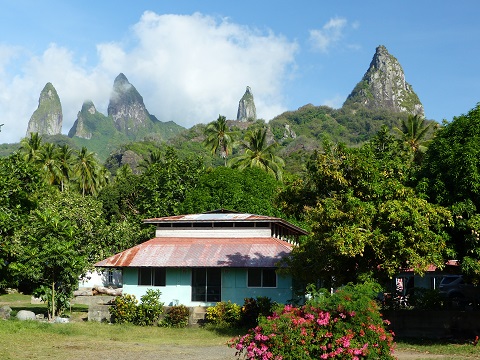 |
Random pictures from our month spent on the islands of Hiva Oa, Tahuata, Ua Pou, and Nuku Hiva
45 Photos
Created 18 July 2015
|
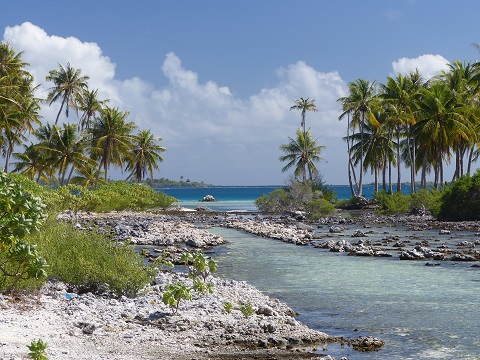 |
Random pictures from our month spent in 4 Tuamotu Atolls; Ahe, Fakarava, Tahanea, and Toau
32 Photos
Created 1 July 2015
|
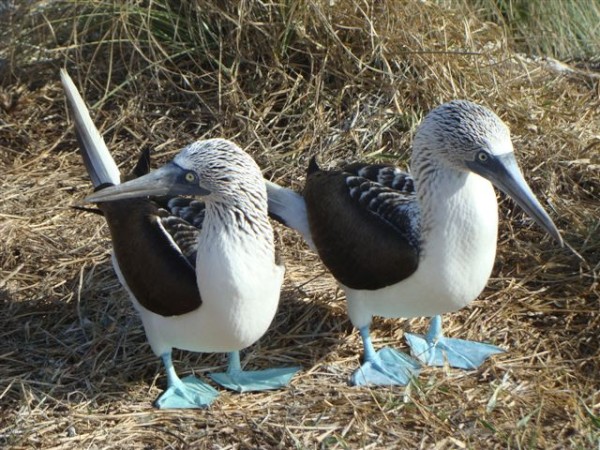 |
Some of the birds, fish, reptiles, and mammals (and others) that we have seen in Mexico
74 Photos
Created 5 May 2014
|
Tregoning

Who: Alison and Randall
Port: Gainesville, FL
